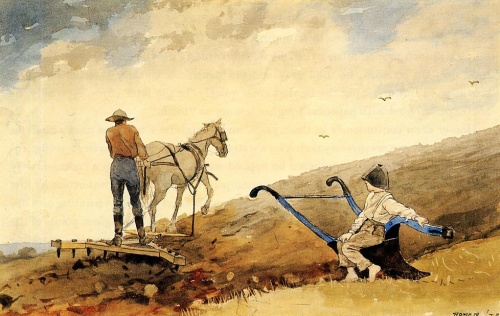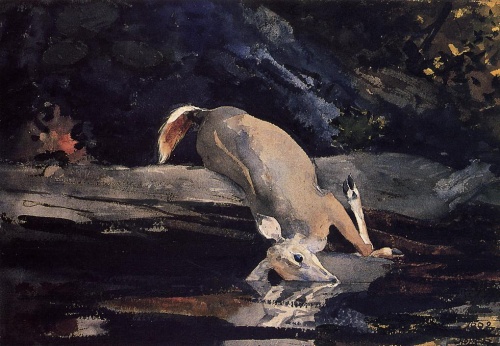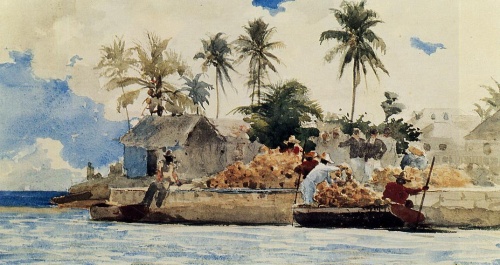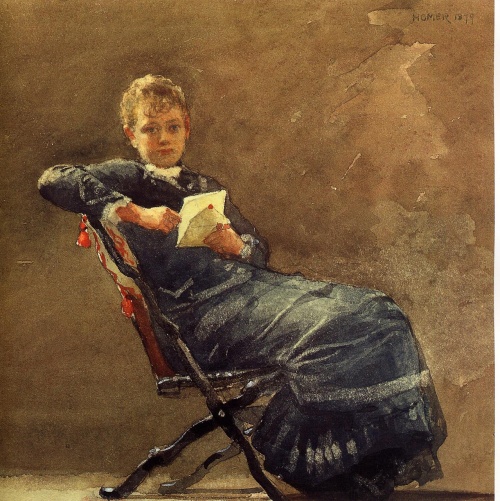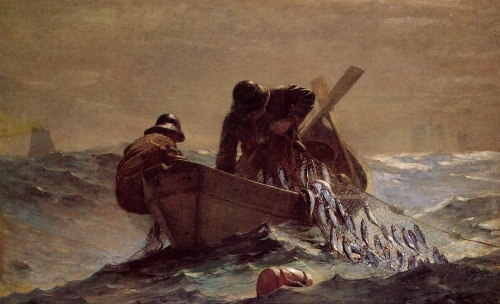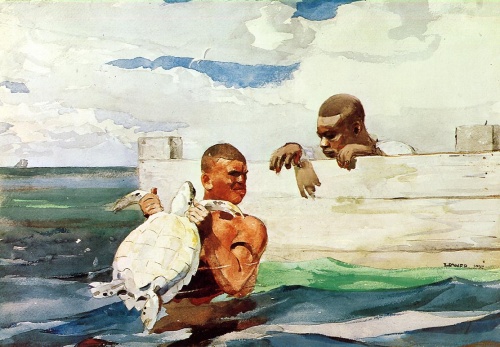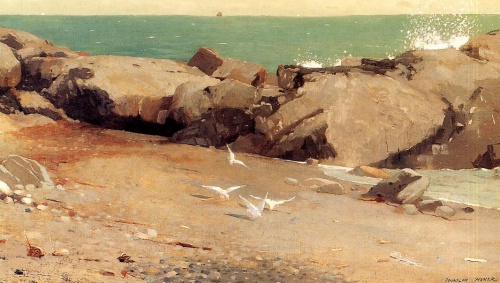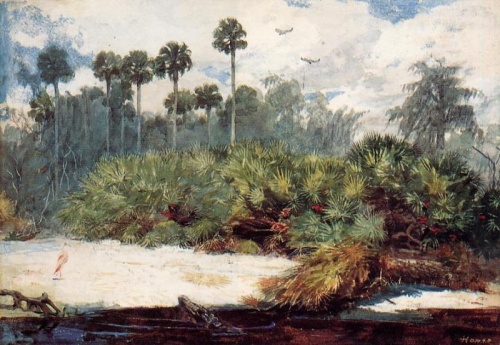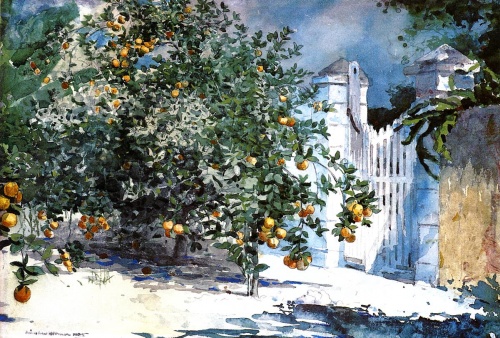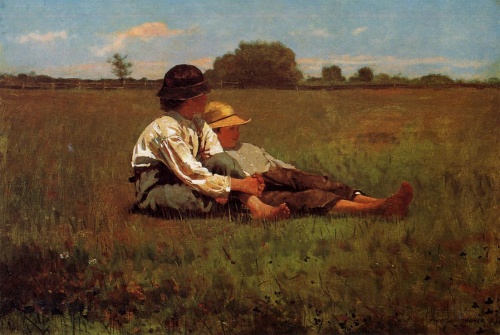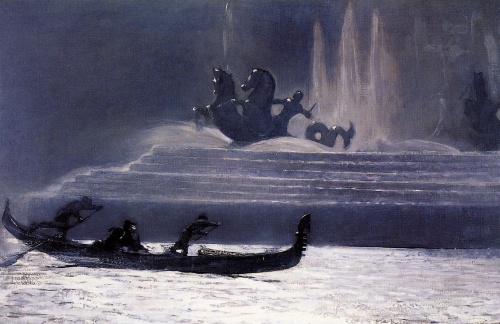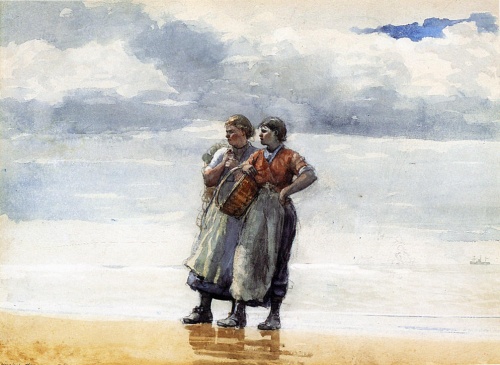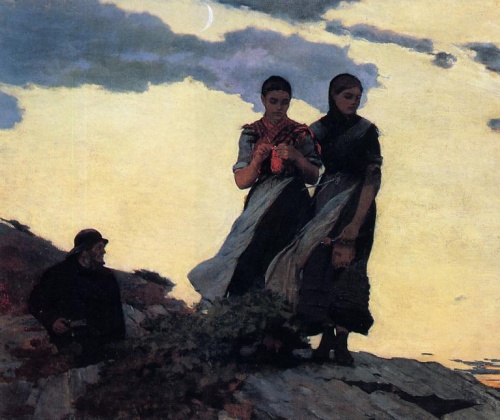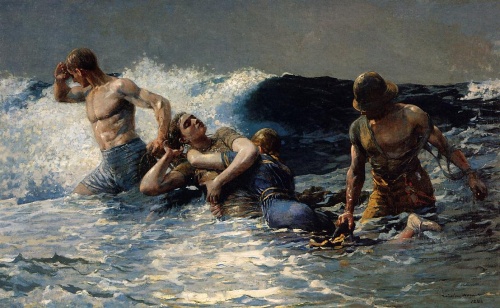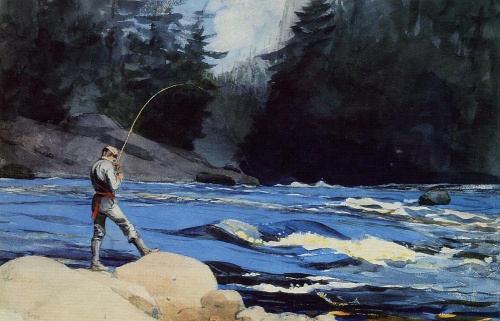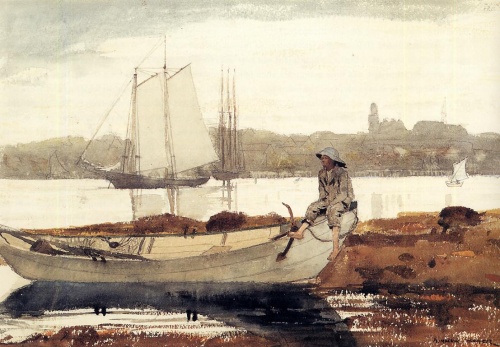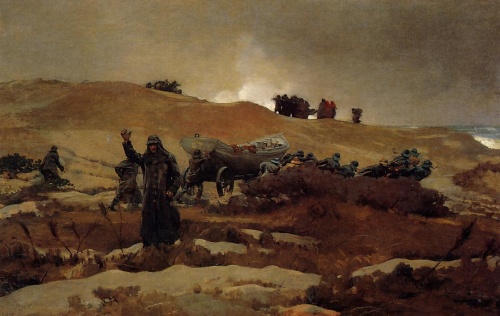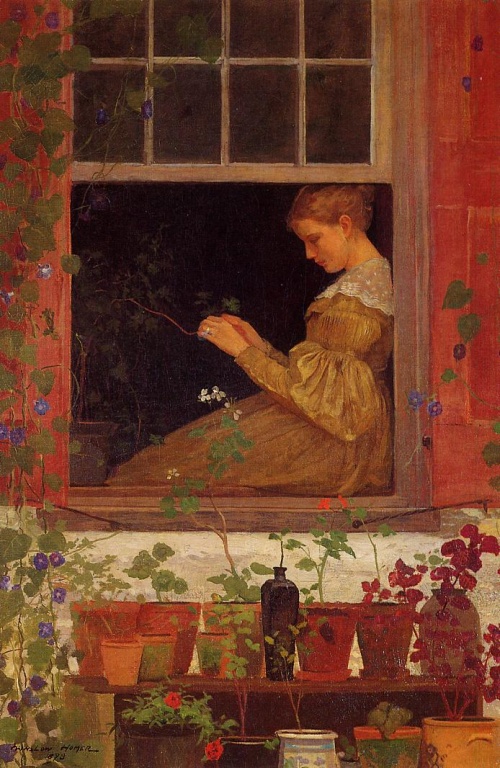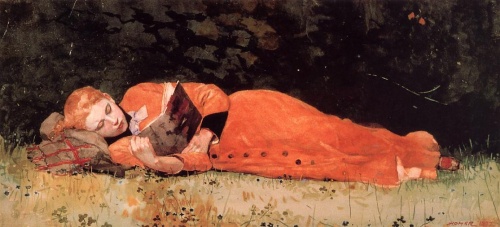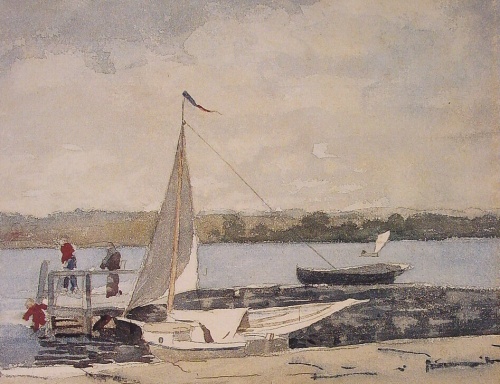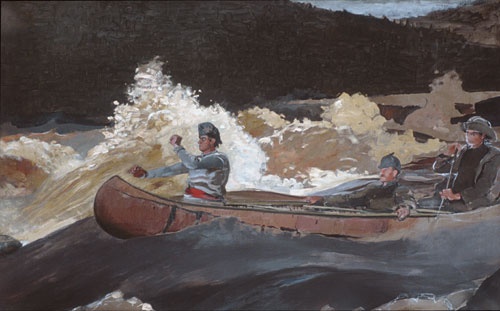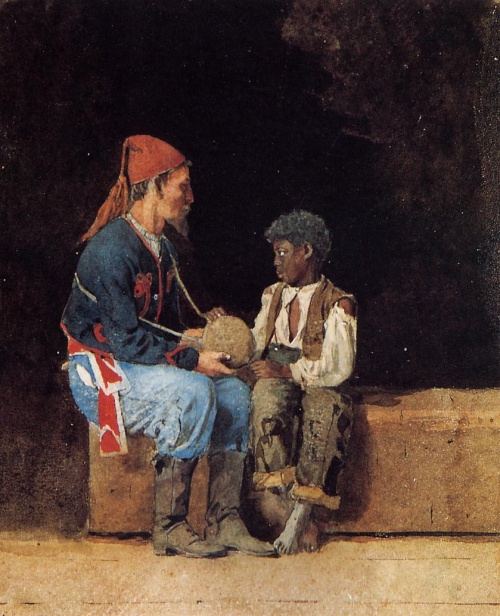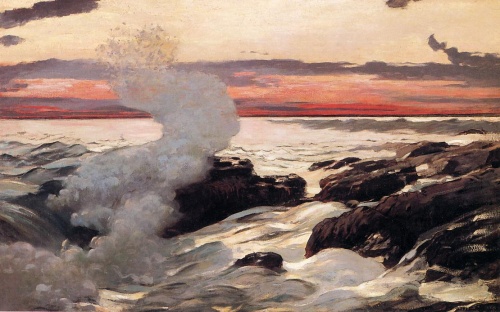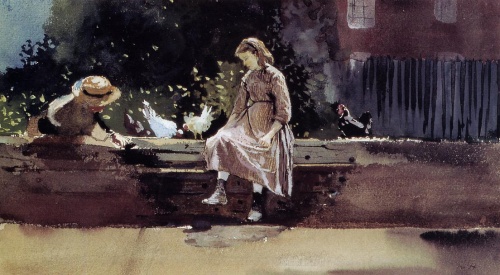Winslow Homer 1836 - 1910 (144 works)
Разрешение картинок от 500x289px до 1278x1282px
Winslow Homer 1836 - 1910.
American painter and graphic artist, one of the leaders of American art of the 19th century, master of the romantic genre, founder (along with Thomas Eakins) of American realistic painting. Most famous for its seascapes. Known for both his oil and watercolor works. Most researchers consider Homer as a major figure in American art of the 19th century, who influenced the entire subsequent development of American painting. Homer belonged to the first generation of American artists to create their own American art school. While most of his contemporaries viewed European art as their ideal, Homer, although influenced by a wide variety of artistic movements, based his work primarily on purely American subjects.
Homer's work is divided into two markedly different periods. Until the early 1880s, when he lived mainly in New York, his paintings were dominated by light, sunny landscapes and scenes. From the mid-1880s, H.W. lives in Maine, his work is more characterized by dark tones and scenes of violence and tragedy.
Winslow Homer was born in Boston on February 24, 1836, into a middle-class family that periodically experienced financial difficulties. Both parents, Charles Sivage Homer, Sr., and Henrietta Benson Homer, came from the oldest families in New England. Winslow Homer was the second of three sons. When he was six years old, the family moved to Cambridge, where his father kept a shop. Homer's mother, an amateur watercolor artist, became her son's first teacher and was his greatest influence until her death in 1884.
In 1842 the family moved to Cambridge, where W.H. received his primary education at the Washington Grammar School, although he was never a diligent student. His first experiments in drawing date back to this period. The drawings describe city life in Boston, later New York.
In 1854, at the age of 18, Winslow Homer decided not to go to university. Instead, with no formal education, he was apprenticed to one of the most famous engraving companies in the United States, J. H. Bufford's in Boston. There he worked until 1859. This period coincided with the greatest flourishing of illustrated magazines in the United States.
Since 1859 he lived in New York.
During the Civil War 1861-1865. - War correspondent for the weekly Harper.
Since 1862 he was engaged in painting.
Visited France (1866-1867) and England (1881-1882).
How an artist improved independently,
studying works of American and French realistic painting. Already the painting Prisoners from the Front (1866), which combined documentary accuracy with a vivid psychological description of representatives of both armies, showed the originality of Homer’s realistic talent.
Later he painted pictures mainly from the life of ordinary people in America - farmers, hunters, sailors; many works are dedicated to the life of blacks.
Depicting large-figured scenes against the backdrop of American landscapes painted in rich colors, Homer emphasized the noble courage, naturalness, connection with nature, and hard work of his heroes.
In 1884-1885 took trips to Canadian Newfoundland and the Bahamas.
A milestone in the development of the favorite theme “man and sea” was the painting “Life Line” (1884) - depicting a rescued shipwreck victim. The temperamental romance of the master’s images turns into symbolism, where natural elements receive equal dramatic rights next to man. From somewhat idyllic rural scenes (The Dinner Hour, 1873), Homer moved on to dramatic depictions of man's struggle with nature (The Hunter and the Hound, 1892; Gulf Stream, 1899).
Works: "The Hunter and the Hound"; "Girl with a Basket", 1882; "In the Shallows, Tynemouth", 1883; "Glass Windows, Bahamas"; "Longboat, Bermuda"; "Coast and surf in Nassau"; "In the Florida Jungle"; "Fisher Girls on the Shore, Tynemouth"; "House and Trees"; "Boatman"; "Negro Huts and Palms"; "Pioneer"; "Overcoming Thresholds"; "Jumping Trout"; "Homosassa River"; "Fishing in the rapids, Saguenay"; "Fishing Boats, Key West"; "Fresh breeze"; "Gone to Sea"; "Hurricane, Bahamas"; "Cliffs of Maine"; "Turtle Pen" and others.
Died in Prouts Neck, Maine.
